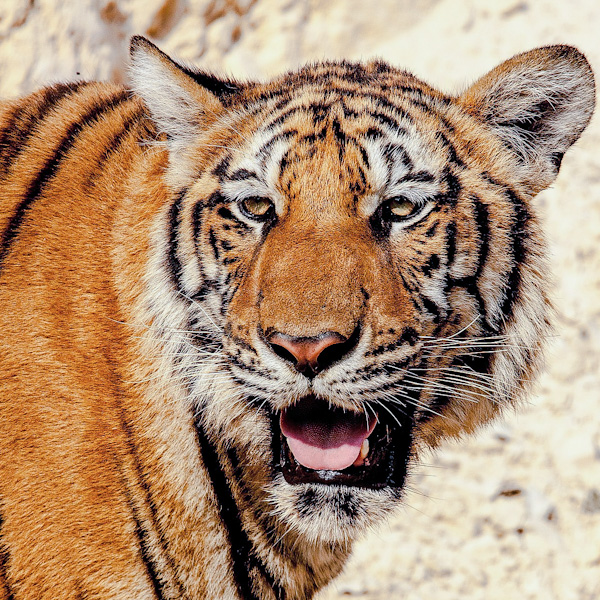Tiger Vocalizations
The tiger communicates in fundamental terms like any other cat including domestic cats. It also scent marks as a form of communication. Scent fades and needs to be renewed. The tiger is a good vocal communicator.
 |
| Blue tiger vocalising. Pic in public domain. |
Some of the sounds the tiger makes can travel long distances and are designed for that purpose. And bearing in mind the tiger lives in dense vegetation the sound has to travel through that too. Other vocalizations are meant to be used in face to face encounters to greet, reassure, appease and to show aggression. Body language plays a role in these vocalizations. Close range, friendly sounds between females and young are obviously commonplace. The sounds are variable in "intensity, duration and rate of emission".
Tigers have a number of types of vocalizations:
People can hear the tiger roar from 3 kilometers away. Clearly its purpose is long distance communication. It would be useful if we could communicate over 3 kms! The roar is used:
Tigers have a number of types of vocalizations:
- main call
- prusten - "staccato puffing sound" - close range sound. Greeting sound. Air is forced through mouth and nose. The lips flutter.
- growl
- snarl
- grunt
- moan - a subdued roar. Usually made with head down. Heard over 400 meters away.
- meow
- spit
- hiss
- coughing/snarl - short harsh sound with teeth bared. This sound is used when attacking.
- tigers seem to mimic prey sometimes making a similar sound to the alarm call of the sambar deer. It is not clear why the tiger makes this sound. It may be designed to confuse the deer. Although an expert, Schaller says that it advertises the tiger's presence to avoid sudden encounters. I don't understand that.
- "woof" type sound. This is a vocalized emotion of surprise.
People can hear the tiger roar from 3 kilometers away. Clearly its purpose is long distance communication. It would be useful if we could communicate over 3 kms! The roar is used:
- after prey is killed
- before mating
- during mating - cats mating
- female beckoning her young
- female advertising sexual receptiveness (not commonly). Coming into heat. Can occur day and night. Used to call for a male. Male arrives within 24 hours and roars himself!




Comments
Post a Comment
Please comment.